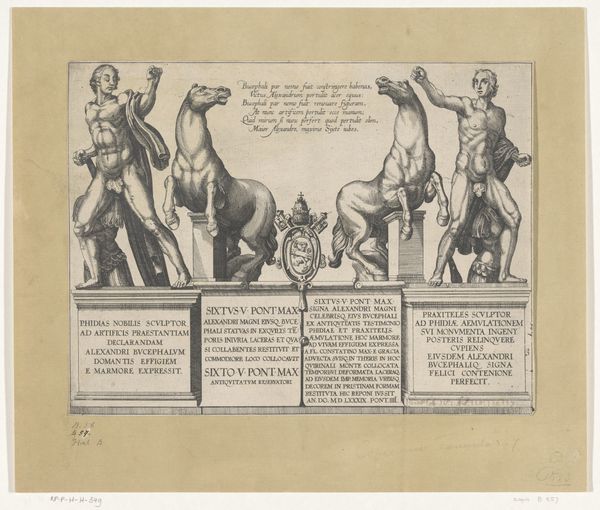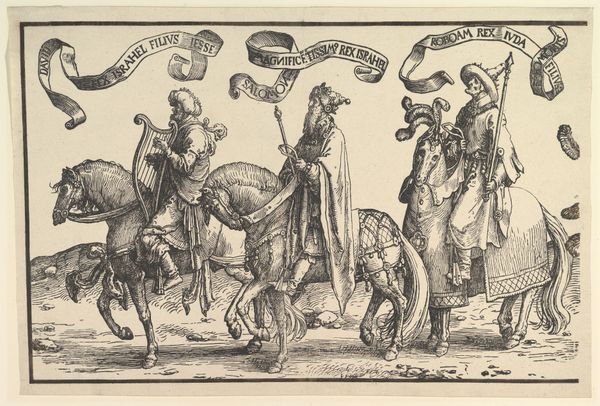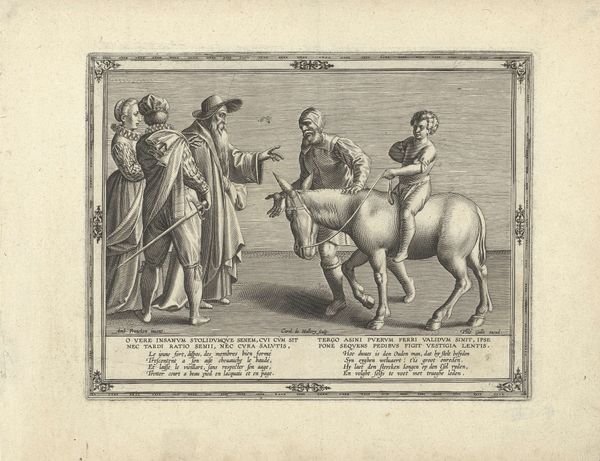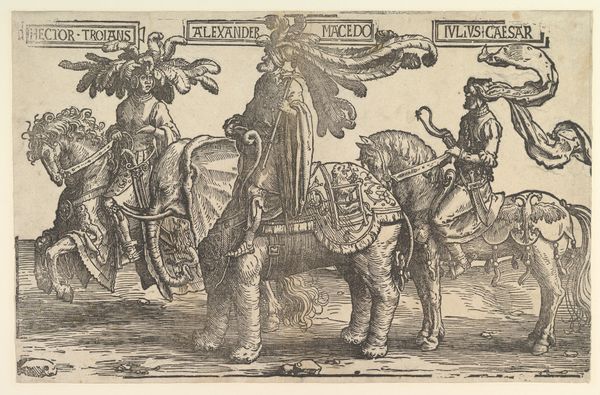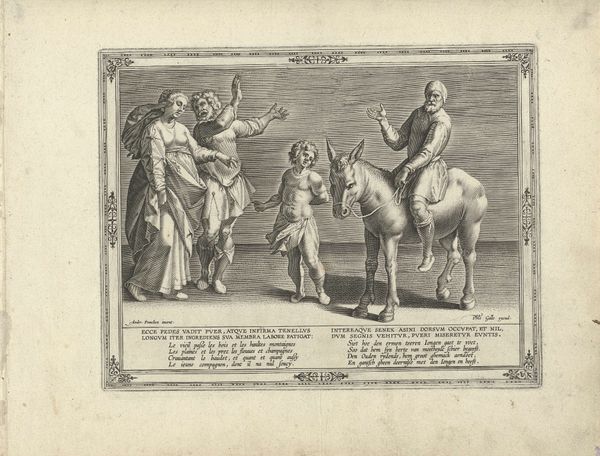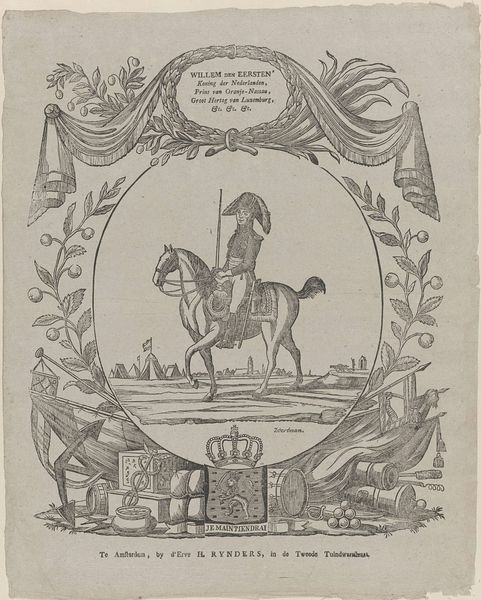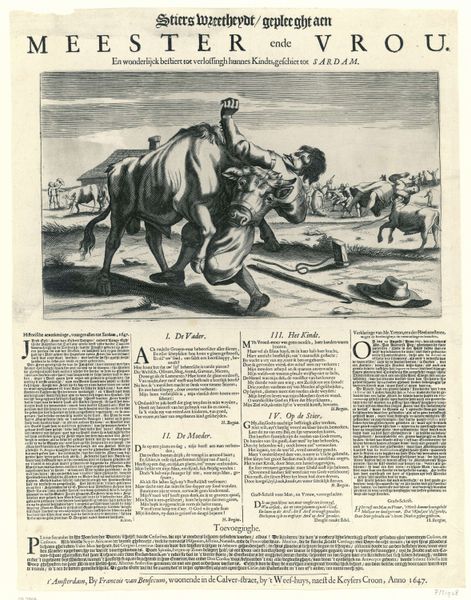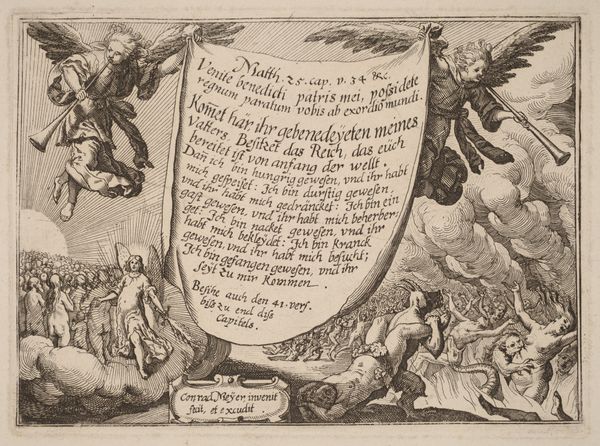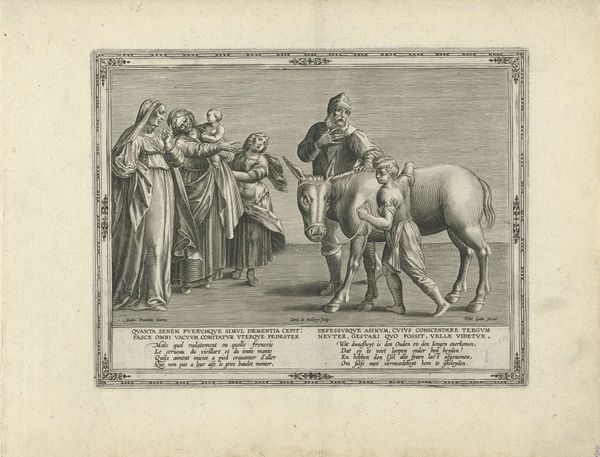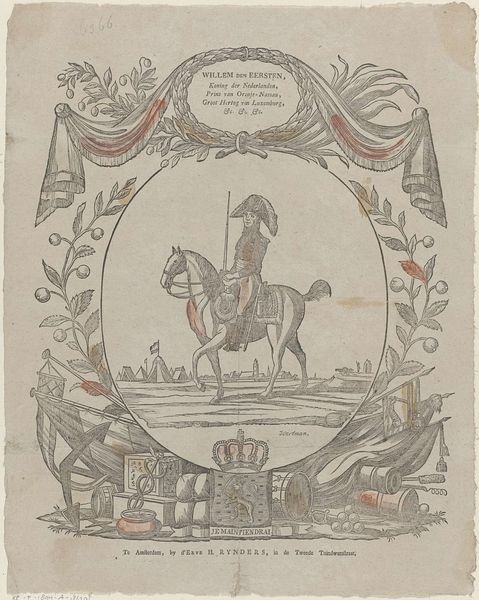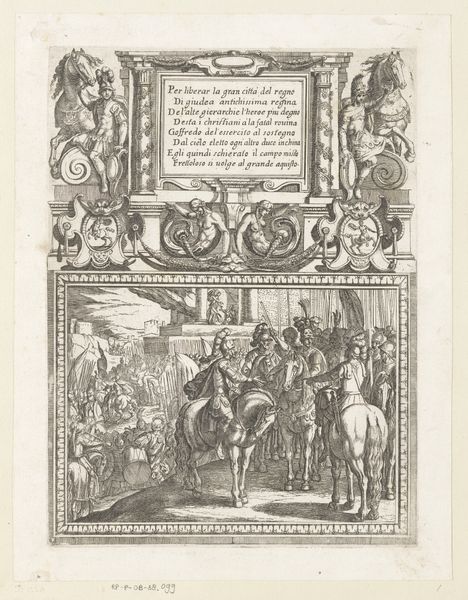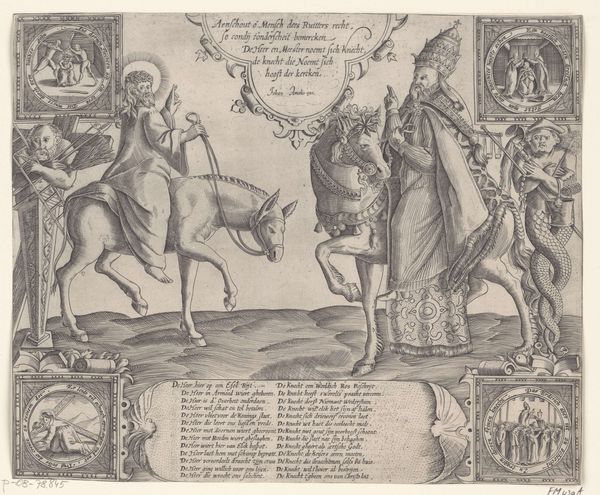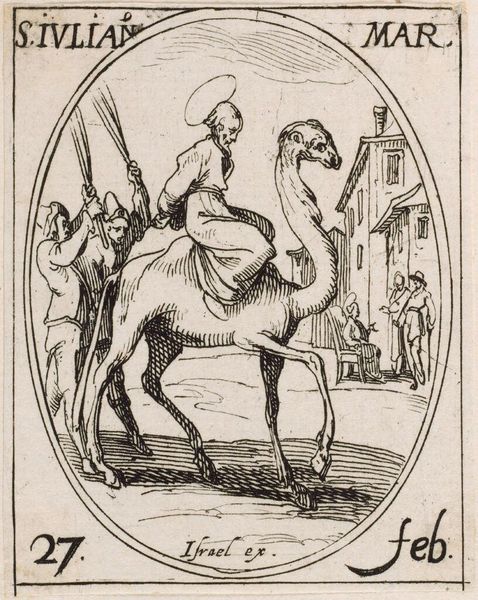
print, metal, engraving
#
baroque
# print
#
metal
#
landscape
#
figuration
#
history-painting
#
engraving
Dimensions: height 362 mm, width 490 mm
Copyright: Rijks Museum: Open Domain
Editor: Here we have "De Dioscuren" by Antonio Tempesta, created sometime between 1565 and 1630. It’s an engraving printed on metal and housed in the Rijksmuseum. There's something so striking about the way the human figures and horses mirror each other, and how everything is arranged so symmetrically. What’s your perspective on this piece? Curator: It’s a fascinating print precisely because of that rigid symmetry and the grand pronouncements about artistic rivalry inscribed at the bottom. Think about this image circulating amongst an elite 17th-century audience steeped in classical history and contemporary artistic debates. Tempesta's print acts as a visual argument about cultural authority, doesn’t it? Editor: Cultural authority? Can you expand on that? Curator: Certainly. Consider the prominent display of Latin text. The inscriptions directly reference not only Phidias and Praxiteles – celebrated sculptors of antiquity – but also Pope Sixtus V and his restoration of Roman monuments. This positions the papacy as a champion of classical ideals and a patron of artistic excellence. Don't you think this elevates the standing of Rome at a time when its cultural dominance was being challenged by other European powers? Editor: I see what you mean. The Pope is actively shaping Rome’s image through art. So, this isn’t just a depiction of classical sculpture, but a statement about the power of institutions to shape narratives? Curator: Exactly. This image reflects how institutions used and continue to use art to bolster their public image. Furthermore, look at how meticulously Tempesta renders every detail. It is not merely showing you the statues; he is showing you the active reconstruction and reinterpretation of a past, presented for a very particular present. Editor: It’s amazing how a print of some statues can be so loaded with political meaning. Thanks, that's a completely different perspective. Curator: My pleasure. Seeing art through its historical context often reveals layers we might otherwise miss.
Comments
No comments
Be the first to comment and join the conversation on the ultimate creative platform.
